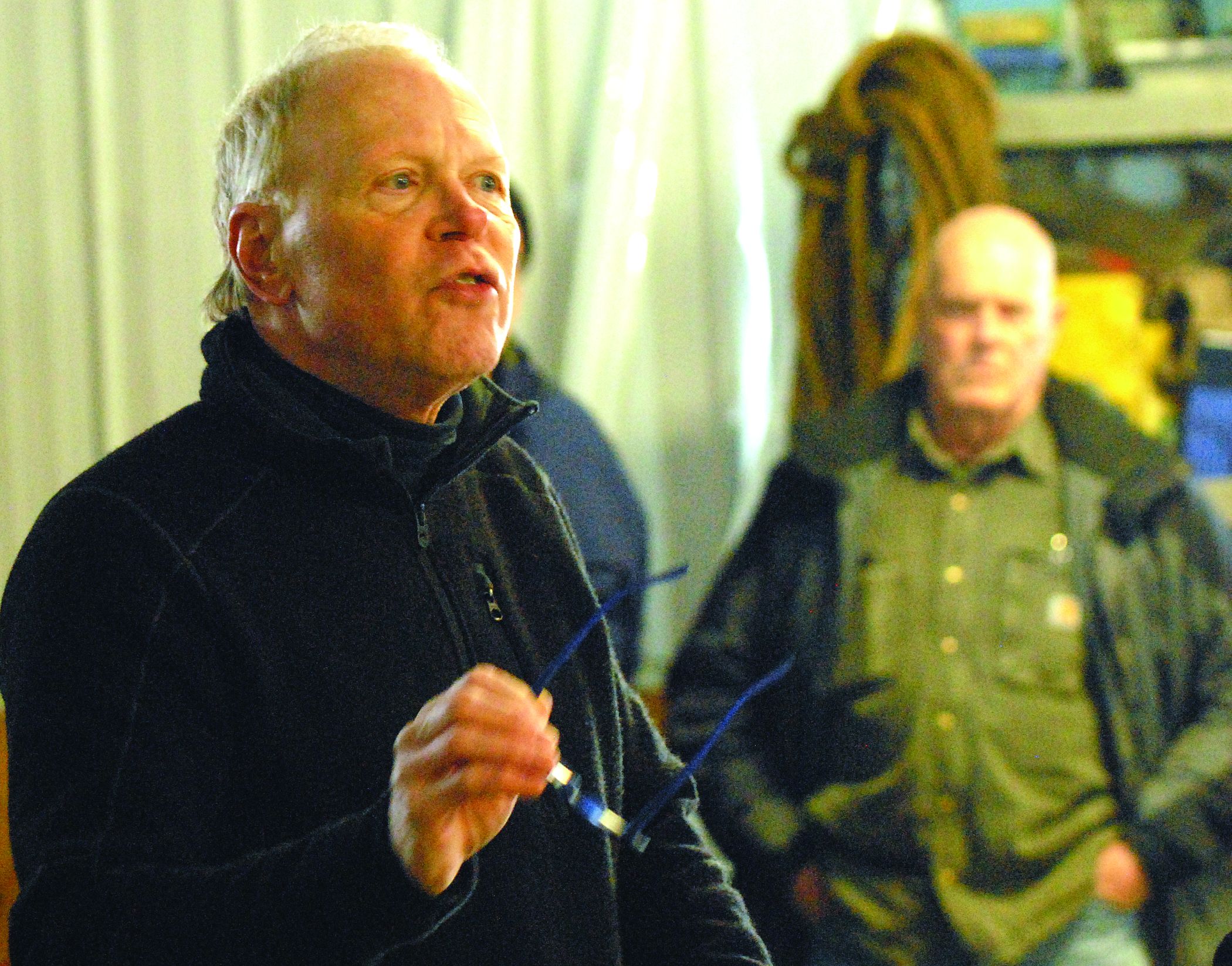Subscriptions
Menu
Advertisements
How high the real cost of big solar?
3/9/2024 |
By Patsy Nicosia |

If the concerns shared Thursday over large-solar’s impact on farmland, taxes, local roads, and now, wells, caught you off-guard, it’s because you haven’t been paying attention.
More than 100 people—including a contingent from Canajoharie, where a 300-MW solar project is in the works—packed into a machine shop at the Skip and Stuart Salisbury farm to jeer the state’s love affair with developers like NextEra Energy and its impact on rural communities.
Assemblyman Chris Tague called the press conference after learning that the Salisburys have lost nearly all the water to the well for their milk barn—they believe because of solar construction on Sakon Road in the Town of Sharon—but the focus was much larger.
“We are losing productive farmland,” Assemblyman Tague told the crowd, calling the state’s green energy policies out-of-touch and misguided.
“The fact that farmers are already struggling to stay in business…We can survive without large solar, but we can’t survive without our farms.
“The people in control up in Albany…they don’t understand us. They have no idea where their food really comes from. Governor Hochul, I hope you’re listening.”
Both Assemblyman Tague and State Senator Peter Oberacker called for local control over solar projects, increased funding for the state agencies overseeing it, and more funding for host communities.
Those are all things Sharon Supervisor Sandy Manko and Blenheim Supervisor Don Airey, head of supervisors’ energy Committee, have been asking for since the NextEra project first came to light in 2017.
As an Article 10 project—now called 96-c—it was subject to state—not local—review as a way to streamline green energy development and approved in 2020.
The 1,100-acre farm the 50-MW solar project sits on is now for sale, listed at $15,350,000.
“Don’t give up. Never give up,” Senator Oberacker said.
“It’s all about the money,” Supervisors’ chair Bill Federice said, “and how the state makes it so easy and enticing. Money is everything.”
Which is what Mr. Airey has been fighting to change.
A lawsuit led by Schoharie County challenging changes in the state’s assessment formula for large solar would have been a game-changer, he said.
Until the state wrote a law to go around it.
“We’re talking a loss of billions of dollars over 25 years,” Mr. Airey said. “If we’ve got to have this stuff, if we have to give up prime agricultural land, pay us.”
Sharon Highway Superintendent Bill Barbic Jr. has been living the nightmare when it comes to the impact of the Sharon project on local roads.
“The fox is watching the hen house,” is said of state agencies that are supposed to be overseeing the work. “It’s going to be our problem down the road.”
And it already is, said Stuart Sailsbury: they can’t access land they farm off Sakon because it’s closed for solar construction.
“I kept my mouth shut until five or six weeks ago,” he said. “Then I started to get mad.”
Use that anger, said Schoharie County Farm Bureau President Steve Smith.
“I encourage you do what you can to make your voices heard. To make sure that message gets back to Albany.”
Mr. Airey also has other plans.
Referencing the county’s previous lawsuits—and maybe more to come-- “We’re not done yet,” he said.









